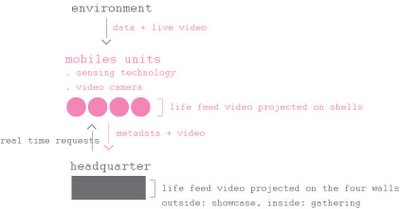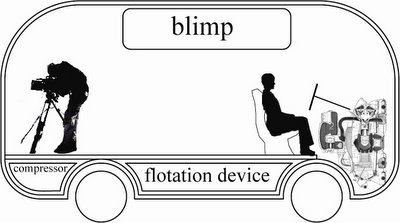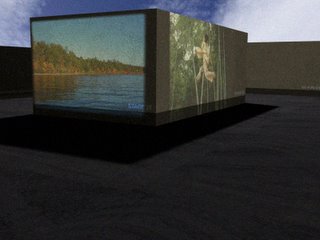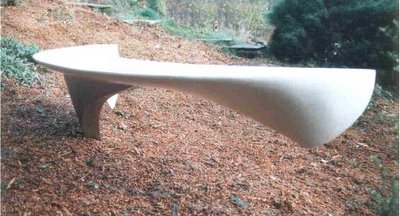If you’re new here, you may want to subscribe to my RSS feed to receive the latest Architectradure’s articles in your reader or via email. Thanks for visiting!
As part of ARCHITECTURE SCIENCE AND TECHNOLOGY, AN INTRODUCTION, course by Antoine Picon, Harvard University.Context
Between the 50’s and the 60’s it is a climax of modernism architecture and it is the period during which modernism is questioned.
The Archigram movement fostered a new type of relation to technology, a relation more linked to mass consumption. The idea is : could pleasure transform itself into nightmare because of what technology entails? It is also the beginning of digital culture. Kem Koolhass or Bernard Tschumi are both radical architects and their work raise issues that are still relevant today. For instance Archigram raises the following question: Does architecture form still matter? And also super studio questions the status of economy.
Technology and the critique of the Modern Movement in the 1950s-1960s
The modern movement had not really grasped the essence of technology; in the 20’s technology is a collection of fascinating devices, and in the 50’s technology is a seamless web of artifacts and is a connection between artifacts, the connection becomes more important than what it connects, e.g. connectors, plugs. It is also the time of the atomic bomb where a man can destroy the planet. There is this notion of globalization and a global vision, view that will inspire artists at the time. There comes the feeling that the time is closing, giving it an extra degree of finitude. There is the bio layer, the tech layer which is a third layer above it all, as a surface condition. This is very different from the continuous notion of technology from the 20’s. Then when one starts to think that earth is finished then all follows.
In the 20’s technology is seen as linked to a productivist vision but not to consumerism and in the 50’s it is linked to the idea of consumption and to the US, for instance the work of Richard Hamilton in 1966: his collages on mass consumption. The idea is that technology might be about pleasure and that technology can provide pleasure and that you can loose your soul in this world. The modern movement had not understood the full extent of technology. Technology as a system of links ends as a techno sphere with the critic of the fetishism of the object. The moderns had not understood technology as an environment.
Before understanding Archigram, one has to understand the megastructure, e.g. Gunter Domenig (dwelling unit for Graz), Nicolas Schoffer (Cybernetic city), and Yona Friedman (Paris Spatial). The super structure becomes invisible on top of the city so that human can finally breeze like birds.
A mega structure is about:
– A way of life: a new way to live
– About connection: the mode is important and how things are linked to one another. A system of connection
– An environment: control.
Architects produce structures bordering utopia due to this technological context but the mega structure idea is contradictory: what is then architecture about? Is it object (because mega structure looks like a giant object, an entire city shaped as objects). It is linked to hyper-concentration about dispersion.
The main contradiction about the mega structure is that its DNA is itself destructive; if the mega structure proliferates, the you don’t see earth anymore, then it is not a structure but it becomes a surface. And it disappears as a structure.
The English context
In the 50’s England has just won the war but is poorer than what planned. In the mid 50’s this gets better and there is hope. The independent group in the UK looks at the new nature of technology and consumerism as a new relationship to technology. What later becomes pop culture is questioned then. In their CIAM grille, they criticize this relationship and fetishism and propose a more architectural vision of society.
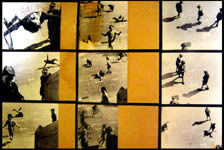
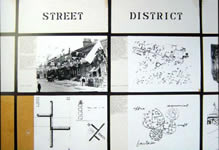
The CIAM grille
In the golden lane project, the city becomes a system of connections in 1952. The idea: let’s redistribute architecture in a system of connection. It is a system of dwelling units. This gives birth to the mega structure where you plug-in units and you can program the 3D grid of the mega structure (as in Friedman’s work).
Cedric Price is a pioneer in computerized architecture with the Fun Palace. It is a mega structure purely devoted to cultural activity. It is a very detailed project, much more advanced than what Archigram proposes.
Archigram, the group, the review, the projects

The members of Archigram are Warren Chalk, Peter Cook, Dennis Crompton, David Green, Ron Herron, Mike Webb. They all come from the province and from middle class. Cook is the P.R. of the group and Herron is a prodigy craftsman. There are parallel movements that proliferate the same ideas than Archigram and convey their unsatisfactions through journals.
Archigram starts as a journal.
Archigram1 is the journal where they publish their thesis with pop culture scene.
Archigram2 is where they publish their post thesis design, e.g. the fiberglass project and bloobish forms. Nottingham shopping Viaduct is an auto constructive structure, a life that expands itself.
Archigram3 is more organized thematically. They borrow Fuller idea. Architecture is expandable like any structure as deployable units. The message becomes clearer with the new relation to technology. The genius of Archigram is to pursuit what is in the air. The idea that the city is about connections and what happens, urbanism is about creating events, an ambiance. In 1961, Archigram is recognized as avant-garde movement and in 1963 they organize the ‘living city’ exhibition as a set of interactions.
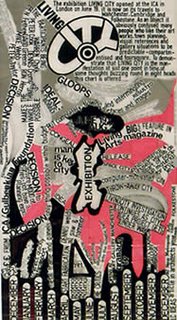

The living city
Hence the montage of collage, neons… In this montage, the gloops are thematic units to have people think about the city, e.g. situation, movement. The idea of the continuous web or l’hypothese des plaques (that Guy Debord loves). Another example: The Montreal Tower is a mega structure with the idea of provisory units.
Archigram4 They use comics to convey messages. It is more about using pop culture. And it is a step beyond the independent group.

Cover of archigram 4
The most emblematic city is the plug-in-city, city into a set of connections, at every level, environment level.
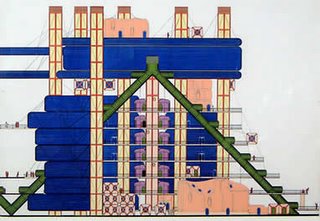
The plug-in city
They introduce the new use of colors and the overcraft to travel from one city to another. One critic about this work is that it is usually at the stage of sketches rather than detailed projects. Then the computor city from 1964 to 1965 is the idea of the controlled environment, they put a mega structure in movement, e.g. the walking city.


The walking city
The living pod (1966) is a kind of tent that can move independently from the mega structure.


The living pod
The idea of the space suit and that you can carry a huge environment on your back and can transform into a house, e.g. Cushicle.

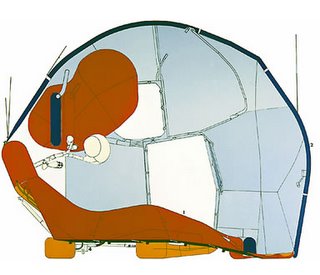
The cushicle
One of the latest project by Archigram is the seaside bubble, and then it goes to the idea of mobile unit, that a city is about creating interactions for the environment and more about an atmosphere. Then the idea of instant city (that instantly transforms itself) with a ‘dirigeable’ that projects events which is more linked to their earlier idea and to the one of situationists.

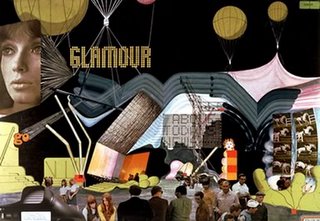
The instant city
One question is : is it an installation? Is it architecture?
The mega structure is disappearing but carry itself with architecture. Archigram have never theorized and never asked ‘where is architecture’ while they were making their collages. They also raised the idea of pleasure or intolerable suffering within technology.
At the time of the Monte Carlo project, the mega structure has disappeared and becomes a surface. If architecture is an environment, what is the status of form? This question is implicit in the mega structure movement to overcome the modern movement.

The Monte-Carlo project
Archigram is about colors and strange picturesque: technology picturesque, there is something about the Victorian bathroom in Archigram. In the UK there is humor while in France and Italy it is Marxist and talk more about the drama of capitalism even though this is the basis of architecture. An architect builds something in revolt. The radicals produce architecture based on the impossibility to produce architecture in capitalism and explore the limits of the architecture practice.
The Italian radicals and their posterity
Archizoom is composed of Andre Branzi, Paola Deganello, Massimo Morozzi and Gilberto Corretti. Branzi is the head of the movement. They use computer chips to show connections for instance. The future of the mega structure is the distribution of electricity and all with the incertitude of the form. That echoes with the digital culture today. Is it a paradise? Is it a nightmare? The idea of over consumption, by Benjamin, begins at the time.
Superstudio is a little bit less negative than archizoom and reflect a lot on the status of form.
The type of questions raised: Is architecture absurdity? What is the meaning of boundaries we try to create? Strangely globalization has recreated a meaning for architecture because of competition. When there is total homogeneity, there is no justification for architecture… What type of humanity populates those structures? What comes next in post-modernism?
In architecture theory
Notes taken during the Architecture Science and Technology class taught by Antoine Picon the 28th Nov 2005

















